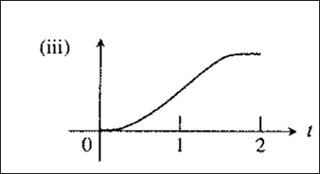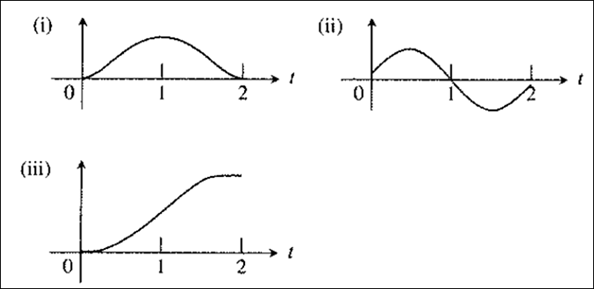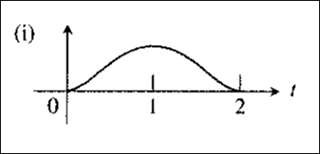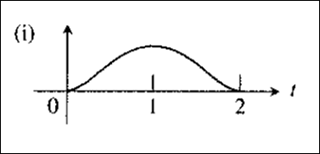
Concept explainers
a.
To find: The distance traveled for each second of a two minute automobile trip.
a.
Answer to Problem 61RE

The above graph show the distance traveled for each second of a two minute trip in an automobile.
Explanation of Solution
Given:

Graph
Graph
Graph
Conclusion:
Graph
b.
To find: The velocity for each second of a two minute automobile trip.
b.
Answer to Problem 61RE

The above graph shows the velocity for each second of a two minute trip in an automobile.
Explanation of Solution
Given:

Graph
Graph
Graph
Conclusion:
Graph
c.
To find: The acceleration for each second of a two minute automobile trip.
c.
Answer to Problem 61RE

The above graph shows the acceleration for each second of a two minute trip in an automobile.
Explanation of Solution
Given:

Graph
Graph
Graph
Conclusion:
Graph
Chapter 3 Solutions
Calculus 2012 Student Edition (by Finney/Demana/Waits/Kennedy)
Additional Math Textbook Solutions
University Calculus: Early Transcendentals (3rd Edition)
Precalculus (10th Edition)
Single Variable Calculus: Early Transcendentals (2nd Edition) - Standalone book
Precalculus Enhanced with Graphing Utilities (7th Edition)
Precalculus: Concepts Through Functions, A Unit Circle Approach to Trigonometry (4th Edition)
 Calculus: Early TranscendentalsCalculusISBN:9781285741550Author:James StewartPublisher:Cengage Learning
Calculus: Early TranscendentalsCalculusISBN:9781285741550Author:James StewartPublisher:Cengage Learning Thomas' Calculus (14th Edition)CalculusISBN:9780134438986Author:Joel R. Hass, Christopher E. Heil, Maurice D. WeirPublisher:PEARSON
Thomas' Calculus (14th Edition)CalculusISBN:9780134438986Author:Joel R. Hass, Christopher E. Heil, Maurice D. WeirPublisher:PEARSON Calculus: Early Transcendentals (3rd Edition)CalculusISBN:9780134763644Author:William L. Briggs, Lyle Cochran, Bernard Gillett, Eric SchulzPublisher:PEARSON
Calculus: Early Transcendentals (3rd Edition)CalculusISBN:9780134763644Author:William L. Briggs, Lyle Cochran, Bernard Gillett, Eric SchulzPublisher:PEARSON Calculus: Early TranscendentalsCalculusISBN:9781319050740Author:Jon Rogawski, Colin Adams, Robert FranzosaPublisher:W. H. Freeman
Calculus: Early TranscendentalsCalculusISBN:9781319050740Author:Jon Rogawski, Colin Adams, Robert FranzosaPublisher:W. H. Freeman
 Calculus: Early Transcendental FunctionsCalculusISBN:9781337552516Author:Ron Larson, Bruce H. EdwardsPublisher:Cengage Learning
Calculus: Early Transcendental FunctionsCalculusISBN:9781337552516Author:Ron Larson, Bruce H. EdwardsPublisher:Cengage Learning





